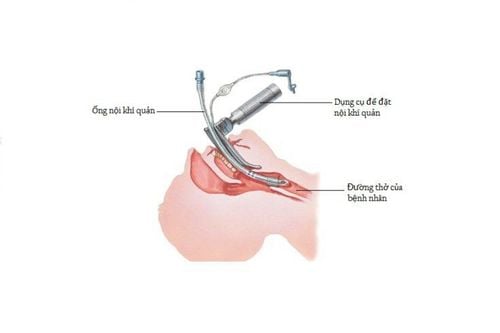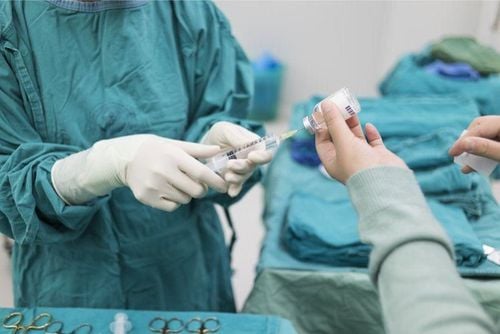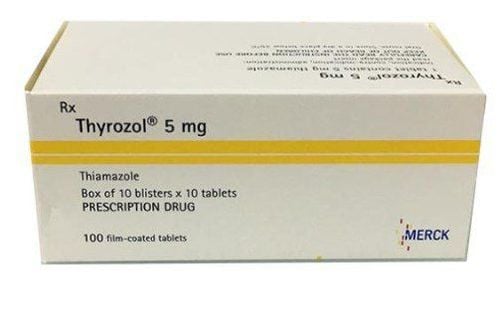This is an automatically translated article.
The article is professionally consulted by Specialist Doctor I Tran Thi Ngat - Department of General Surgery - Vinmec International General Hospital Da Nang.Thyroid surgery or thyroid surgery is a preferred treatment option in many thyroid conditions, the most common being thyroid nodules. Thyroid surgery can bring a number of early complications after surgery or late complications, in which bleeding after thyroid surgery is a problem that causes many difficulties for patients and treating doctors. Therefore, the technique of hemostasis after thyroid surgery is a technique that requires the operator to have expertise in order to save the patient's life.
1. Learn about thyroid and thyroid surgery
The thyroid gland is an important endocrine gland in the body located in the neck region, in front of the trachea corresponding to the 2nd to 4th tracheal cartilage rings. The thyroid has the form of two symmetrical lobes connected by the isthmus. thyroid gland in the middle. In healthy individuals, a normal thyroid gland is not clinically palpable because it is obscured by large muscle masses in the anterior neck region such as the sternocleidomastoid muscle. In thyroid diseases, a goiter occurs so that the thyroid gland can be recognized by sight or palpation due to its increased size. The thyroid gland is an endocrine gland that plays an important role in development and metabolic processes. Thyroid hormone, called thyroxine, is responsible for the following main roles:Promotes the growth and differentiation of groups of cells in the body Stimulates growth; catalyzes metabolic reactions in the body. such as glucose, protein, lipid

Thyroidectomy surgery Surgery to remove thyroid isthmus Total surgery one lobe Thyroidectomy Total bilobectomy Total thyroidectomy Total thyroidectomy with lymph node dissection.
2. Hemostasis technique after thyroid surgery
Thyroid surgery can cause a number of complications for the patient. Classification of possible effects after thyroid surgery will usually be based on the time of appearance, including:Early complications: bleeding after thyroid surgery, respiratory failure after thyroid surgery, voice changes or loss of voice, appearance of tetany after thyroid surgery. Late complications: usually appearing from the 3rd day after surgery, including wound infection, hypothyroidism or hypothyroidism, recurrence of thyroid disease such as goiter.

3. Procedure for surgical endotracheal anesthesia to stop bleeding after thyroid surgery
Endotracheal anesthesia is the technique of choice. An endotracheal tube is used in this case to maintain breathing for the patient during surgery. The procedure of endotracheal anesthesia is highly safe and is applied in many different types of surgery besides hemostasis surgery after thyroid surgery.In order to ensure patient safety and effectiveness of technique, surgical endotracheal anesthesia to stop bleeding after thyroid surgery should be performed properly, including the following steps:
Prepare instruments and equipment: anesthesia system with many types of machines such as vital signs monitor, suction machine, defibrillator, endotracheal intubation system including endotracheal tubes of various sizes, laryngoscope , canule, mask, straw, lidocaine anesthetic spray, ... Patient preparation: patients with bleeding complications after thyroid surgery need to be carefully examined before surgery because this is the first surgery. both manage complications and the patient suffers more. Detecting difficult intubation cases to proactively have appropriate plans, especially in the case of a large hematoma causing severe airway compression, requires the cooperation of the surgeon and the difficult intubation team. The process of counseling and explaining to the patient and family members must not be ignored.


Reflux of food and digestive juices from the stomach into the airways. Blood pressure disorders Misplaced endotracheal tube in the stomach Injuries to breathing and oral cavity Tracheobronchospasm To ensure safety as well as limit functional changes after endotracheal anesthesia surgical grip After thyroid surgery, patients need to strictly follow the doctor's instructions.
Vinmec International General Hospital is one of the hospitals that strictly applies safe surgical anesthesia practice standards according to international guidelines. With a team of experienced anesthesiologists and nurses, along with modern equipment such as nerve detectors, ultrasound machines, Karl Storz difficult airway control system, anesthesia monitoring system GE's comprehensive AoA (Adequate of Anesthesia) including monitoring of anesthesia, pain and muscle relaxation will deliver high quality and safety, helping patients to have adequate anesthesia, not awake, no residual relaxant muscle after surgery. Vinmec Health System is also proud to be the first hospital in Vietnam to sign with the World Anesthesiology Association (WFSA) towards the goal of becoming the safest hospital for surgical anesthesia in Southeast Asia.
Doctor Ngat has more than 15 years of experience as an Anesthesiologist and resuscitator at Hospitals: Da Nang Obstetrics and Gynecology Hospital, Hospital 199 of the Ministry of Public Security, Tam Tri Hospital in Da Nang. Currently, he is an anesthesiologist at the Department of General Surgery - Vinmec Da Nang International General Hospital.
Please dial HOTLINE for more information or register for an appointment HERE. Download MyVinmec app to make appointments faster and to manage your bookings easily.














